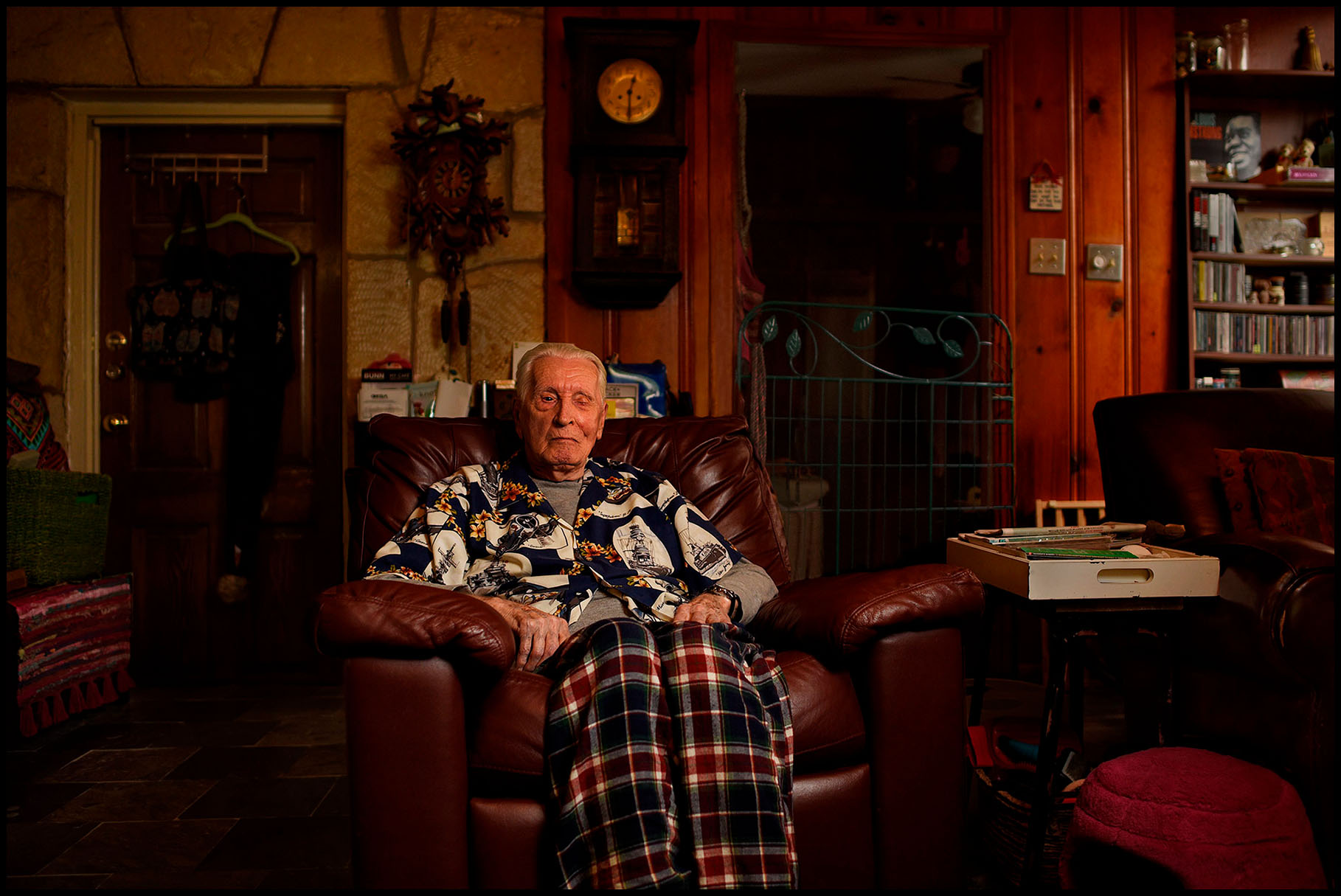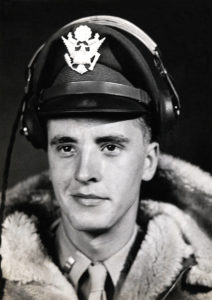
Richard Anderson
Hickam Field, Hawaii
& B-24 Pilot
Richard Anderson
Major, Army Air Corps, Ret.
1940–1966

Lt. Richard Anderson
Italy, 1943
Hi folks, I’m OK and feeling fine, I came through the first one without a scratch. Letter home after Pearl Harbor attack, Dec. 12, 1941.
I grew up in Homer, Michigan and joined the Army Air Corps in July 1940 right after I got out of high school. My one real ambition was to be a pilot. They sent me to Hawaii where I became an operations and engineering clerk for the 23rd Bomb Squad at Hickam Field located at the entrance to Pearl Harbor.
At 6:55 am on December 7, 1941, I was jolted awake by an explosion. I was on the top floor of the barracks. I heard machine gun fire, looked out the window and saw a Jap Zero fly by, strafing the field. I ran outside in my shorts and saw planes strafing the troops as they left the barracks. I ran back inside, dressed and headed for the armory. Seconds after I left, a bomb destroyed the barracks. We had no idea what was happening; they took us by surprise.
At the armory, we got the only guns they had, .45 automatic pistols, and a bunch of shells and went back out on the lawn. All we could do was shoot at the planes that were bombing us. I don’t know if I hit anything, but it made me feel better. It was mass confusion. We battled two waves of planes for about 20 minutes. They attacked a fleet of B-17s inbound from the States. One crashed near us and an incendiary bullet set off magnesium flares which burned through my boots to my feet. I went to the hospital and when I saw the wounded and killed, I decided they didn’t need to mess with me. I received a salve for my feet and left. I looked for my best friend among the burn victims at the hospital. I couldn’t find him and came to realize he went down with his ship, the Arizona, along with 1,177 others.
There was a lot of destruction of course, and we started cleaning up as best we could. We spent the first 24 hours trying to figure out where we were going to sleep and what we were going to do. We were just a bunch of kids.
Once things settled down, they sent me to pilot training at Camp Hemet, California. The commander didn’t like enlisted pilots and put all us boys into glider training for 6-8 months. After that, they sent me to regular flying school. Once we got our wings, we were fast on the bus to the war. We went to the Pacific where I was co-pilot on a B-24, bombing submarines for a year and a half. Next we went to Europe. I eventually became a B-24 pilot stationed in Italy. On my first combat mission, the cockpit window was shattered by German machine gun fire.
On my 19th and last mission, I was seriously injured. It was D-Day, June 6, 1944, one day before my 22nd birthday. We were on a mission bombing submarine pens and troop concentration in southern France. Enemy fire knocked out one engine and crippled a second; the remaining engines failed. We were supposed to land if our plane was hit, but we were on the wrong side of the Alps. We took a vote and decided we would rather die trying to get over the Alps than get caught. We made it until a mile before the base and crashed in an olive grove. The bombardier was killed. I broke several vertebrae in my back, was partially paralyzed and spent a year in the hospital in Florida.
After the war, I was ferrying a plane to Europe, but had plane trouble and landed in Memphis, Tennessee. I went into town, met a nice woman, had three dates, corresponded with her for a year, and when I got back, I married her. This was in 1945. I swept her off her feet; we were married for 67 years. {05-12-2016 • San Antonio, TX}